I want to share a few ideas to help you promote your public domain audiobooks with interesting pull quotes from critics’ reviews, publisher marketing text in your descriptive blurbs, and authentic cover art.
Marketing
The Story Behind the Story Part 2: Music
Today’s World Violin Day! As you know, I play harp, not violin. However, a violinist and his instrument figured prominently in my audiobook of FANNY HERSELF: A PASSIONATE INSTINCT by Edna Ferber and in the music I chose to go under the credits.
I started to write this quick story as a Twitter thread, but I strive to keep my original content on MY site and share it on social media.
How to Download Clubhouse Replays
Last updated 10/10/23
I’ve recently enjoyed participating in several Clubhouse chats. In fact, I held an Ask Me Anything on the site on 9/16/22 to celebrate the 3rd anniversary of NarratorsRoadmap.com.
If you click the link above, you’ll see it goes to an Evernote page that has the Clubhouse graphic and audio recording of the chat, as well as an AI-generated transcript from Sonix.ai. (Please see the additional comments about the transcript in the notes below.)
When creating an open Clubhouse room, you can choose to turn on Replays. The Replay is created automatically once you open the room and will be available on Clubhouse until you delete it. Replays let your audience hear the discussion at a later time, share the link to the chat on and off Clubhouse, skip to the next speaker, and make 30-second clips.
Just as — perhaps even more — importantly, Replays can be re-purposed in other ways, such as in part or whole on other social media sites. You know I LOVE to re-purpose content! For instance, I could transcribe one or more recordings and copy my words to a blog article. I’ve also extracted clips to make audiograms to promote the replay in between live events. I’m thrilled to announce that my Clubhouse shows are available on NarratorsRoadmap.com with AI-generated transcripts and on podcast platforms like Apple and Amazon/Audible!
ACX U – Acting With Intention
Most of this blog’s readers know about the audiobook production site ACX.com. Each year, ACX produces educational programming called ACX University. I had the great pleasure of being a guest speaker on the topic of Acting With Intention in one of the 2018 ACX University sessions.
During and after the video broadcast, I chatted with viewers. As usual for the Queen of Links, I shared a number of resources in that chat session. I also answered a number of questions.
While the chat is embedded with the video, I wanted to post all of the ancillary material and discussion here on my blog to make it easier to reference. That way, you can watch the video and not worry about missing anything.
Are QR Codes Still Used?
Updated 17 September 2022
After poring over my Audiobook Marketing Cheat Sheet, an author recently asked me whether QR codes are still relevant and in use.
I responded that the answer to that question depends on who you ask. You’ll find compelling arguments on both sides, but the codes seem to be regaining their popularity.
Lifehacker reported in April that Apple iOS 11 and some Android phones can read QR codes natively, so you no longer need a special app to scan them. Presumably, Apple wouldn’t spend the time and cost to develop this feature if no one wanted to use it. You simply click on the smartphone camera app, point it at the code, and the operating system will scan and convert it for the browser.
This SocialMediaToday article, also from April, talks about Facebook rolling out QR codes for Pages and links to an article about the popularity of these codes in Japan and China.
I agree with the assertions in this article that QR codes continue to be good tools as long as you use them correctly — i.e., only on printed materials though they will scan from the screen — and keep the linked content updated and optimized for mobile access.
I decided to post this article on my blog for narrators because I have a QR code on the back of my business card that links to my web site. This way, I can hand out my business card to someone, and they can instantly connect to and HEAR my demos.
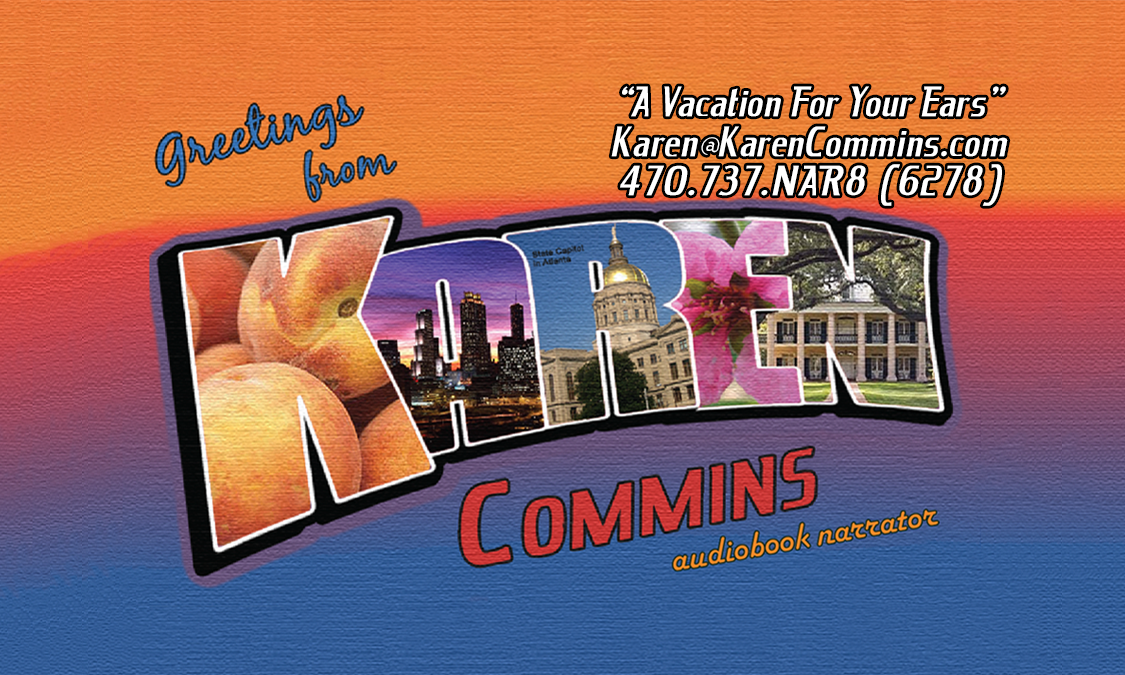

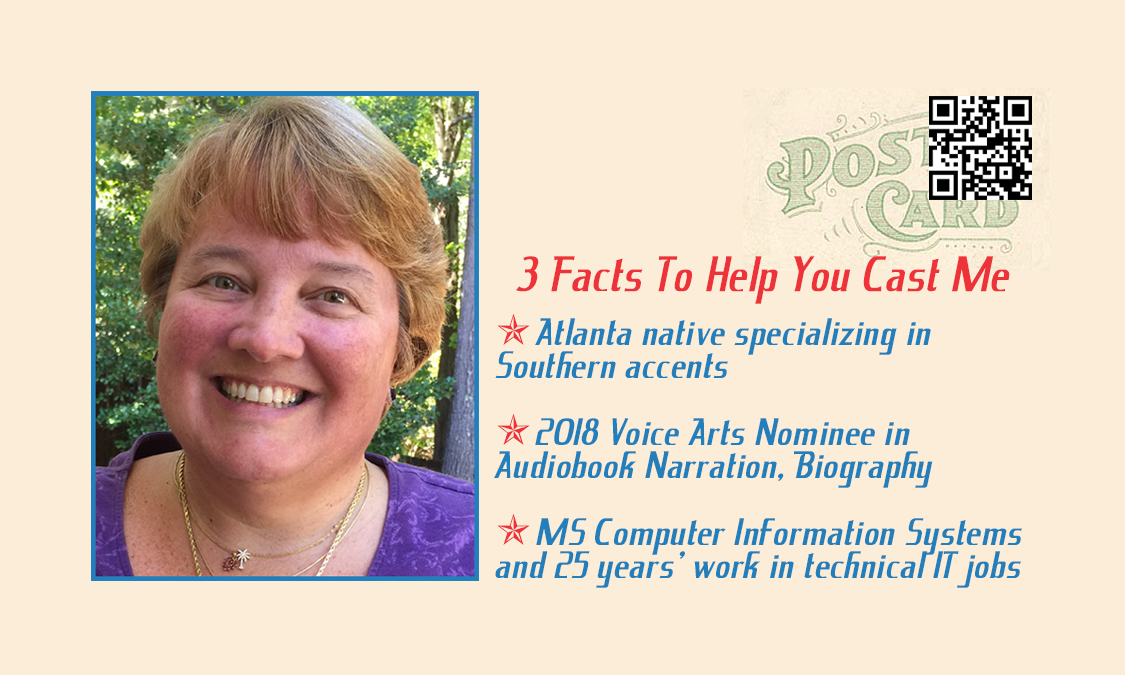

My web site URL is in my email address. Many people would prefer to type it, may not have the ability to scan the code, or may not understand the code.
Since my logo looks like a vacation postcard, I positioned the QR code on the back where the stamp would be on a real postcard.
I even have a QR code on my résumé. If I ever need to leave a printed copy with someone, they can scan the code and go to my web site.
For what it’s worth, I used business card CDs before I moved back to paper cards with QR codes. While they had a “WOW” factor, they were expensive and time-consuming to produce. In addition, if I changed my demos, I couldn’t update any business card CDs on hand because I had to burn the files onto the CD. What’s worse, people sometimes had difficulties in playing the small, rectangular CD on their system. Today, so many computers are sold without CD readers that I would advise narrators to avoid making CDs.
I also would avoid using business card thumb drives unless you are sharing them with someone who is expecting to receive files from you.
This article includes a section creating and using QR codes in your marketing. You can use these ideas whether you are promoting a particular book or yourself as a narrator.
Updated in April 2019 to show 3 recent examples illustrating that QR codes are becoming even more entrenched in business:
1. Longhorn restaurants print QR codes on the dining check. You can scan the code in their app and pay for your meal without waiting for your server, saving time for everyone. This measure also gives you added security over your credit card as you never hand it to anyone.
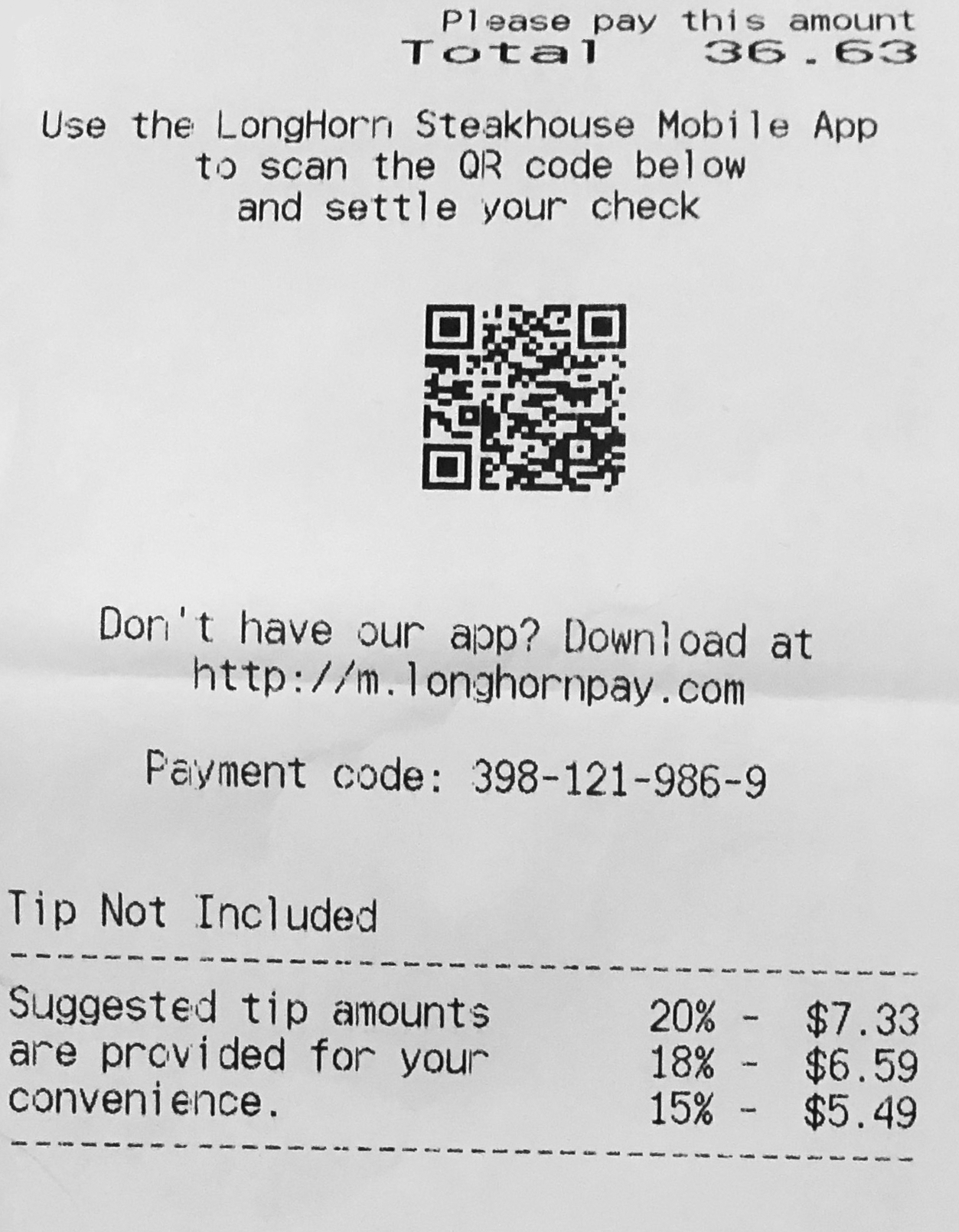

2. Chateau Elan, a resort and winery near my house, must be following my lead as they include a QR code on their business card. Once you scan it, you’re taken to their TripAdvisor page so you can leave a review.
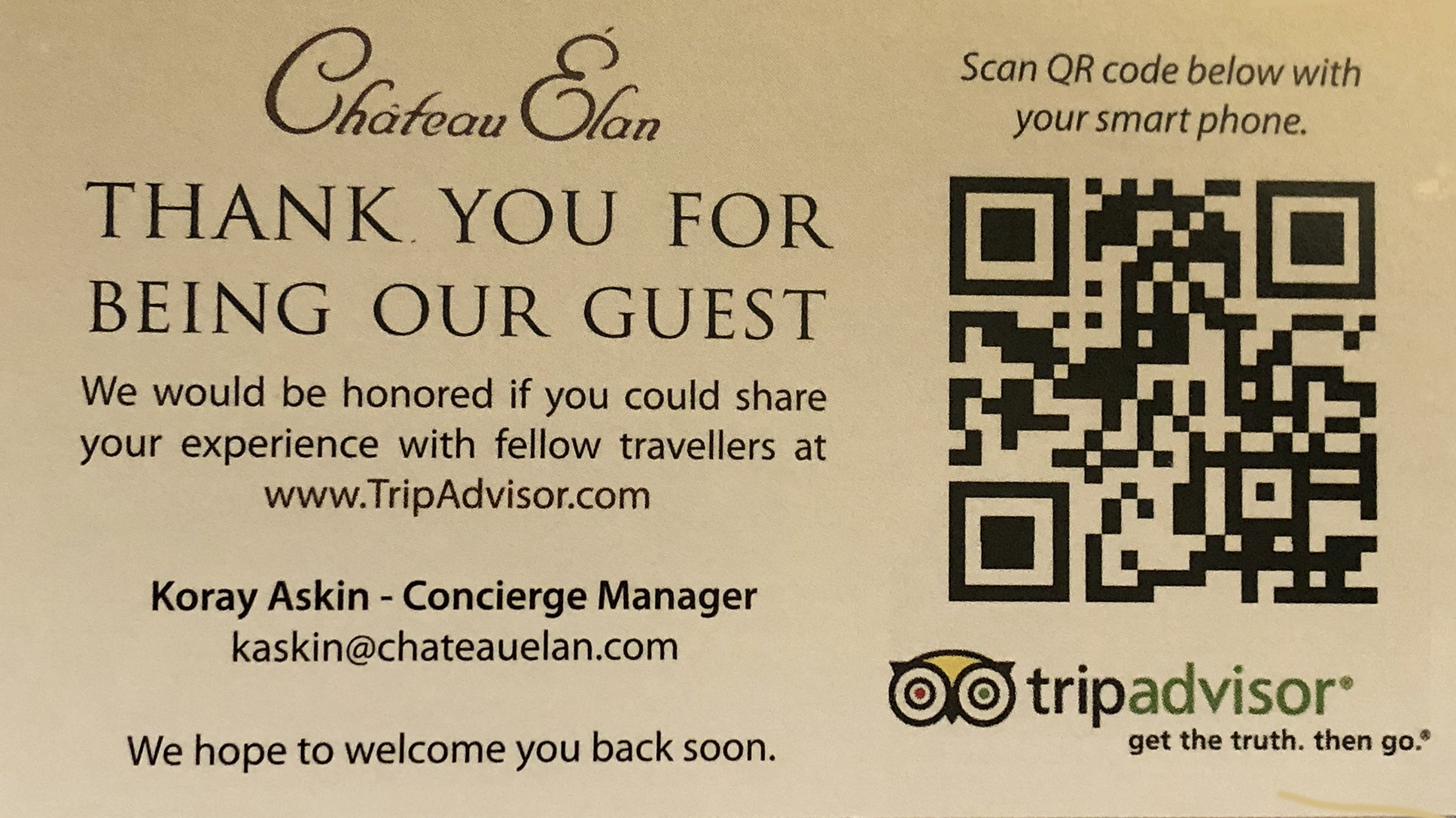

3. VOAtlanta assigned each attendee a QR code in the event app. Rather than swapping and keeping up with business cards, attendees could scan QR codes and have the other attendee’s app profile page added to their contacts within the app.
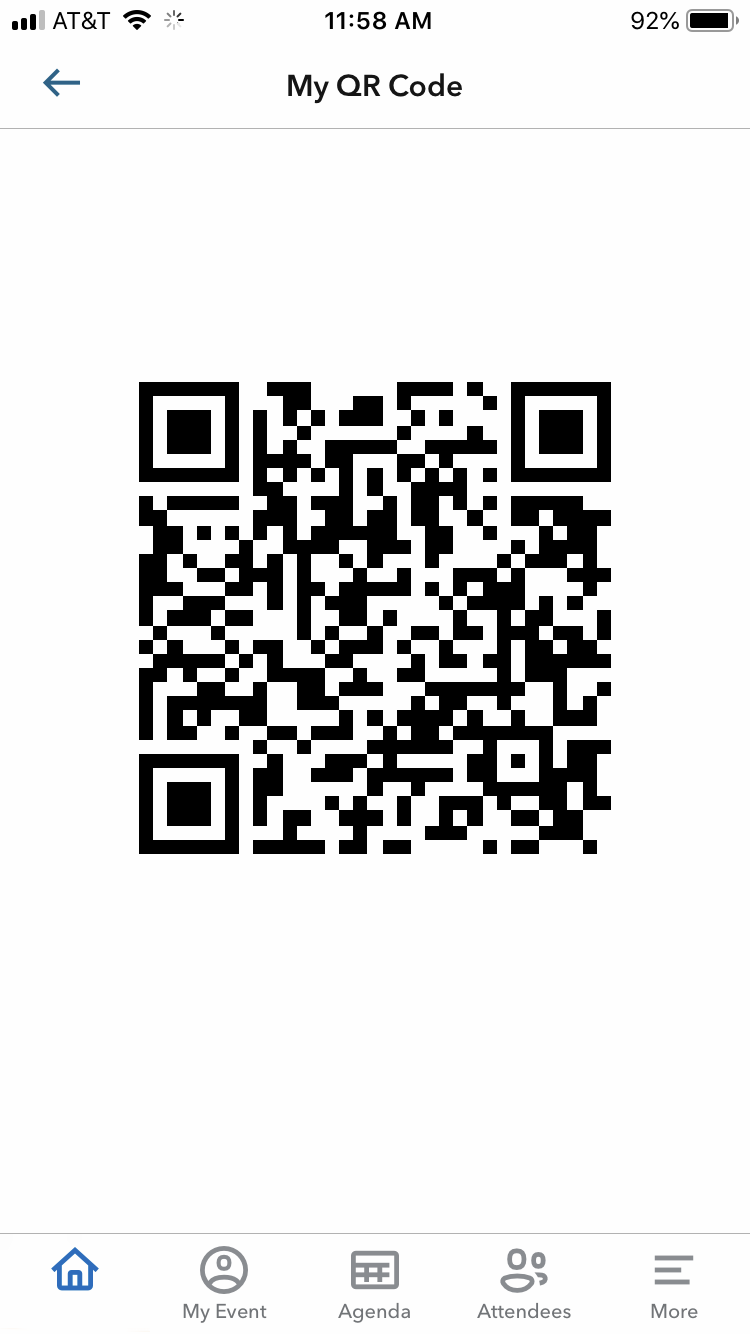

6 Low-Cost Avenues For Greater Audiobook Sales
![]()
![]()
Congratulations! You’ve got a brand new audiobook! It’s time to get the word out about it!
I minored in marketing while in college and have always loved to think about marketing ideas. Sandra Beckwith at BuildBookBuzz.com recently asked me a number of questions related to audiobook marketing. Our interview was posted today, and you can read it here.
A while back, I wrote 2 articles on the ACX.com blog to address this very topic. In Part One, I explained some reasons why people are resistant to listening to audiobooks. I then offered 3 ways to make your audiobooks more discoverable to an audience, including an invaluable site to use when developing a promotions calendar.
Part Two contains 4 more ways to promote your audiobooks and includes some very specific tactics about several social media sites, such as instructions about adding the audio edition of your title to Goodreads and subscribing to my Twitter list of audiobook reviewers and bloggers.
While I encourage you to mine those articles and their comments for their wealth of actionable steps, I’m excited to share these 6 low-cost avenues of audiobook promotion.
Author Mentions
The number one thing that any author can do to sell your audiobook is to consistently alert your fans that you have an audiobook available!
Any time you promote your book, make it a habit to say that the audiobook is also available.
I have been astonished and dismayed by the number of audio rights holders who use ACX to create their audiobooks but then do little or nothing to promote the finished product. The audiobook won’t sell itself!
Some narrators like me heavily promote our titles. However, narrators generally can’t spend much energy marketing any one book as we are constantly recording the next one. The author is the person who wrote the words in the book and has the fan base who most wants to know about — and is most likely to buy — an audiobook edition.
Here are some easy ways to constantly update your fans specifically about your audiobooks:
- Write progress reports on your blog during audiobook production.
- Add a blurb about or even a link to your audiobook in the front matter of your other editions.
- Create a sales page on your web site specifically for your audiobooks, or add links to the audiobooks along with the print editions on your site. Include the audiobook “buy” links from Amazon, Audible, and iTunes every time you mention the book (your web site, blog, social media, interviews elsewhere, etc.)
- Notify your email list about all new audiobook releases.
- Conduct an audiobook event on Facebook to celebrate release day or some other occasion in your promotions calendar.
- Host a Google Hangout On Air or a Zoom chat with your narrator and invite your fans to participate in the live stream. Fans love to have a look behind the scenes! Once the event is over, the recorded video of the Hangout is posted on YouTube. You and your narrator could then share that video on your blogs and social media sites for even more coverage.
Audiobook Boom
The popular AudiobookBoom.com site is the brainchild of fellow audiobook narrator Jeffrey Kafer. Audiobook Boom is kind of like BookBub in that it is a paid service where authors and publishers highlight certain titles. However, Audiobook Boom is only for audiobook promotion, and the weekly email newsletters are sent to subscribers who are audiobook listeners.
You pay $10 per title for a Listen & Review ad. If you used ACX to create your audiobook, you will automatically receive 25 Audible promo codes so you can give copies of your audiobook to eager listeners. With a Listen & Review ad, you’ll quickly receive a number of requests for your book from people who are willing to review it.
Whispersync
If you publish an edition of your book in Amazon’s Kindle format, your audiobook is eligible for the Whispersync feature. This amazing technology allows people to switch seamlessly between the Kindle ebook and the Audible audiobook.
I created a 3-minute video that demonstrates Whispersync in action.
Whispersync also increases sales of both editions. Amazon offers a discount on the audiobook if the buyer first purchases the Kindle edition. In fact, some people will buy the Kindle book simply to get the audiobook at a discount.
If you promote your free ebook on services like BookBub, you can expect to see an immediate ripple effect of sales of your audiobook edition. For instance, a recent Kindle Free ad on BookBub resulted in over 300 audiobook units sold the same day! The royalties from the audiobook sales might easily exceed the cost of the BookBub listing!
QR Codes
You’ve probably seen the square black and white boxes on coupons, in magazines, on store shelves, and on actual products. These boxes are called Quick Response, or QR, codes, and you can create a QR code on-line for free.
QR codes link to some content of your choosing on-line and can create a deeper level of engagement with a fan. People with smart phones can use an app that takes a picture of the QR code and immediately sends them to your link.
You could print the image of a QR code on a business card, postcard or flyer that you mail or hand out at your live events. If you have a print edition of your book, you could include a QR code in it.
After scanning your QR code in her phone app to read them, the recipient’s browser opens to the link you used when creating the QR code. For example, you might create a QR code link that sends people to your audiobook edition on Audible, plays the MP3 of the audiobook retail sample, or calls up the YouTube video of your Google Hangout with your narrator.
As you can see in these pictures, I have a QR code on the back of my business cards. Once scanned, my QR code will bring up my web site in the phone browser.
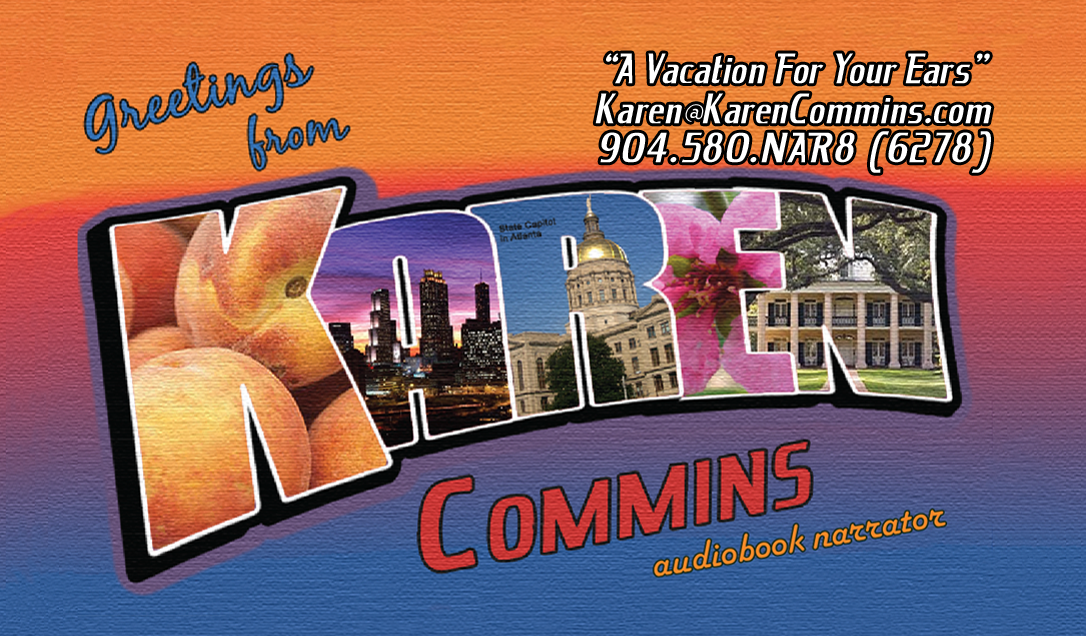

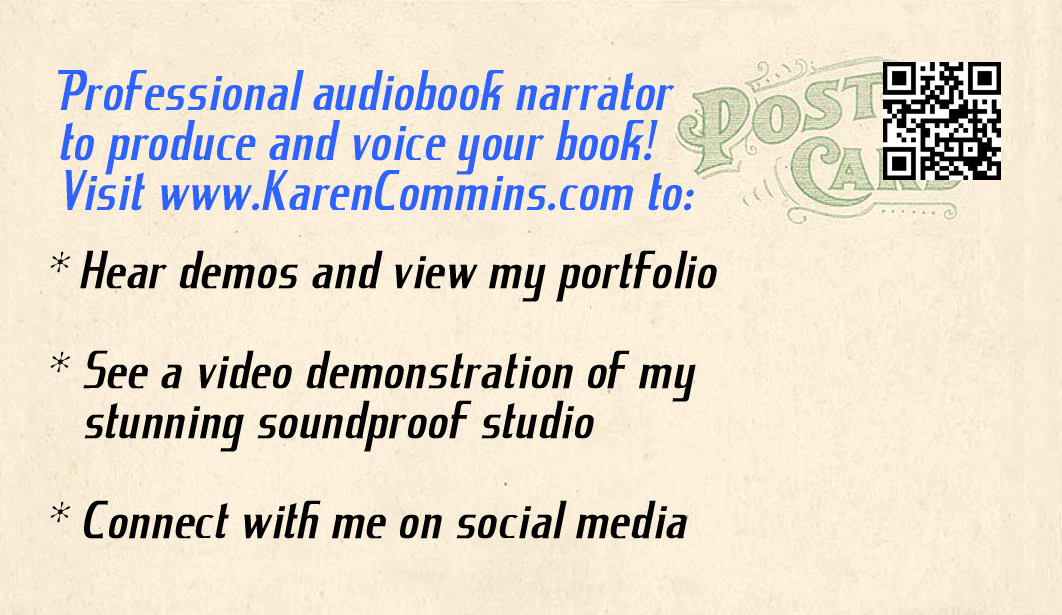

Podcasts
A podcast is defined as a digital recording of a radio broadcast or similar program, made available on the Internet for downloading to a personal audio player.
With the proliferation of smart phones, podcasts are enjoying increased visibility and popularity, and they are a perfect platform for audiobook promotion!
In a Kindle Direct Publishing newsletter, author Hal Elrod, who has sold over 100,000 copies of his self-published ebook, said, “I can confidently say that the number one key to driving book sales has been securing interviews on other people’s podcasts!”
He further commented, “A great place to start is to look on iTunes in the “New and Noteworthy” section to find podcasters who are new (so they’re not inundated with requests) but are gaining a lot of momentum and listeners. Google them, go to their websites, and reach out to tell them how you and your book would add extraordinary value for their audiences!”
You can also seek out interviews on established podcasts. Harper Audio Presents usually features author interviews, even if the author was published elsewhere. In fact, you’ll find many more terrific podcast possibilities by looking in the iTunes store under Podcasts/Art/Literature.
You even can create your own podcast and host it on your web site and/or Soundcloud. For instance, my colleague Ann Richardson and I recorded each of our InD’ear columns and uploaded the recordings to our Narrators Helping Authors Soundcloud account. If you hold a Google hangout with your narrator and/or fans, you can extract the audio and repurpose it as a podcast.
Radio Shows
A podcast interview is valuable experience and can definitely drive sales, but a real radio station has many more listeners. However, unless you’re a celebrity author, the media probably won’t come looking for you. As with podcasts, you can contact local radio stations and ask to be a guest on a show.
According to morning show host Wayne Kelly, the key to booking radio interviews is that you do NOT want to approach the producers as an author promoting a book! The producer could fear booking an introverted author who would provide no value to the listeners. Instead, you would position yourself as someone who increases audience interest with your specialized insight and comments about current stories.
First, keep a list of topics covered in your book. Authors who research topics for fictional stories would develop expertise in those areas. When it’s time to publicize the book and audiobook, look for hot topics in the news which tie into your subject matter knowledge.
Google stations in your locale. You then can find them on social media and/or call the station to ask for the email address of the person who books the most interviews.
As you can see, you can market your audiobook with your book and as a standalone product. Want even more ideas for audiobook marketing? You’ll find them on my Audiobook Marketing Cheat Sheet! If you have questions, please leave a comment on the blog or book a personal consultation on my Shop page.
Most of this article originally appeared in the February 2016 issue of InD’Tale Magazine. I’ve updated some of the info and links.